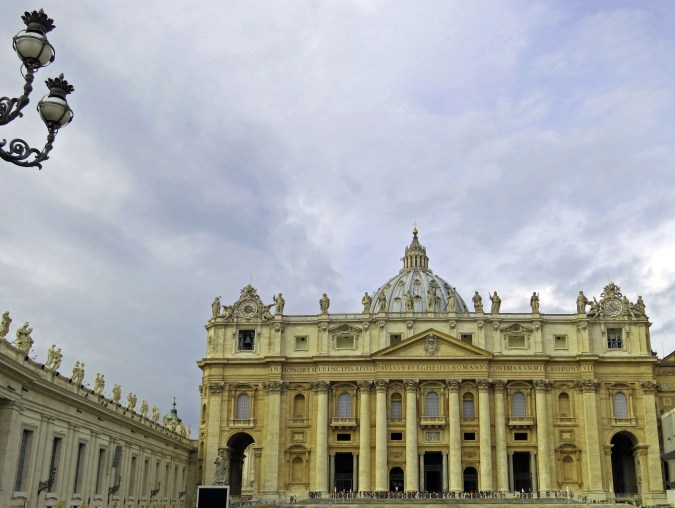
Cloudy skies provide a colorful backdrop for St. Peter’s Basilica with its magnificent dome designed by Michelangelo. This photo is taken while standing in St. Peters Square. Look closely, and you will see ant-like people waiting to enter.
I felt awe when I entered St. Peter’s Basilica. The massive dome designed by Michelangelo is higher than a football field is long. Bernini’s bronze, seven-story canopy looms over the altar where the Pope holds services. Every nook and cranny is filled with world-renowned art such as the Pieta. All combine to inspire a sense of the sacred.
Our hotel in Rome, the Giulio Cesare, was within a mile of the Vatican. We walked over twice, getting mildly lost both times. It didn’t matter. Rome is chock-full of fascinating architecture and tantalizing history.
The first time we went via the Tiber River, passing by the Castle St. Angelo and its neighboring bridge, the Pont St. Angelo. Eventually this brought us to the broad avenue leading up to St. Peter’s Square and Basilica. Mussolini built the avenue to provide visitors with a better view of the church. He also gave the 100-acre Vatican its independent nation status. Today the Vatican serves as the religious center for some one billion Catholics.
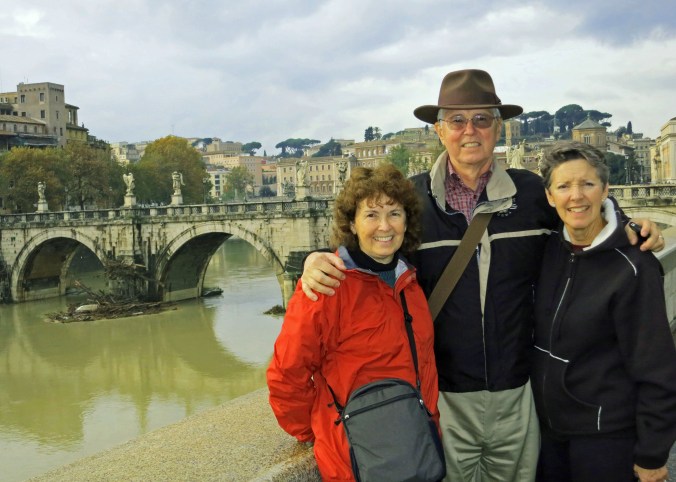
Peggy, her brother John and his wife Frances stand in front of the Tiber River and the Pont St. Angelo (the Bridge of Angels). The bridge was once the Bridge of Emperor Hadrian and dates from the Roman Empire.

Pont St. Angelo received its name during the Renaissance when Bernini oversaw a project to line the bridge with angels reminding the faithful of Christ’s crucifixion. This one carries a lance representing the spear used by a Roman Soldier to jab Christ in the side.

The rounded Castle St. Angelo stands next to the bridge. Built originally as a mausoleum for Emperor Hadrian, it would later become a prison and then fort. Today it serves as a museum. St. Michael stands on top of the castle with sword drawn to fight off the plague. (Photo by Peggy Mekemson.)
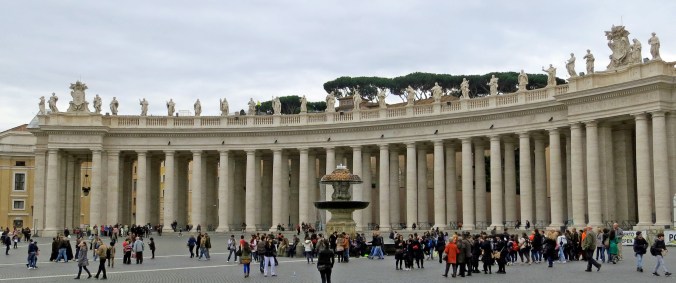
A view of St. Peter’s Square featuring a portion of Bernini’s Colonnade. Statues of 10 foot tall saints line the top.
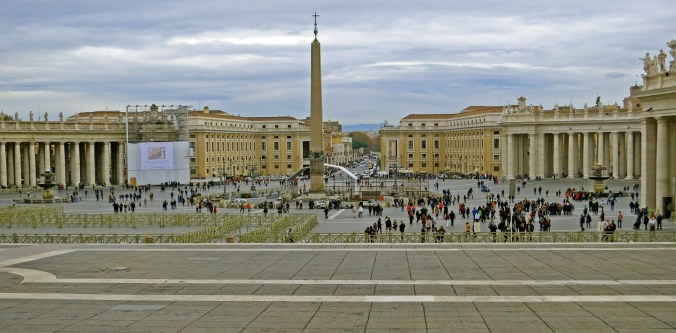
Another perspective of St. Peter’s Square. This is taken from the Basilica looking back. The boulevard built by Mussolini is in the distance. Bernini’s Colonnade opens out, welcoming the faithful.

This obelisk, seen in the previous picture, dominates St. Peter’s Square. Once upon a time it resided in Egypt, but its home in Rome predates that of the Vatican when it stood over Nero’s race track where Christians were persecuted and Peter was crucified upside down.

The top of St. Peter’s Basilica, like Bellini’s Colonnade, features saints. The saint on the left is Simon the Zealot. You can tell your saints by the tools they carry. Simon was a carpenter and is shown with his saw. Simon was called the Zealot because he left his wife and kids to follow Jesus. (Photo by Peggy Mekemson)

No blog on the Vatican would be complete without showing the changing of the Swiss Guard with their pikes and colorful uniforms. (Photo by Peggy Mekemson.)

This lamp from St. Peter’s Square is here because I like it. You’ll see it peeking out on the left hand corner of St. Peter’s Basilica at the beginning of this blog.

I will conclude with this shot I took of the massive columns on the front of St. Peter’s Basilica. I felt they provided an interesting perspective on the size of the church.
NEXT BLOG: I will take you inside of St. Peter’s Basilica and provide a brief tour of the Vatican Museum.
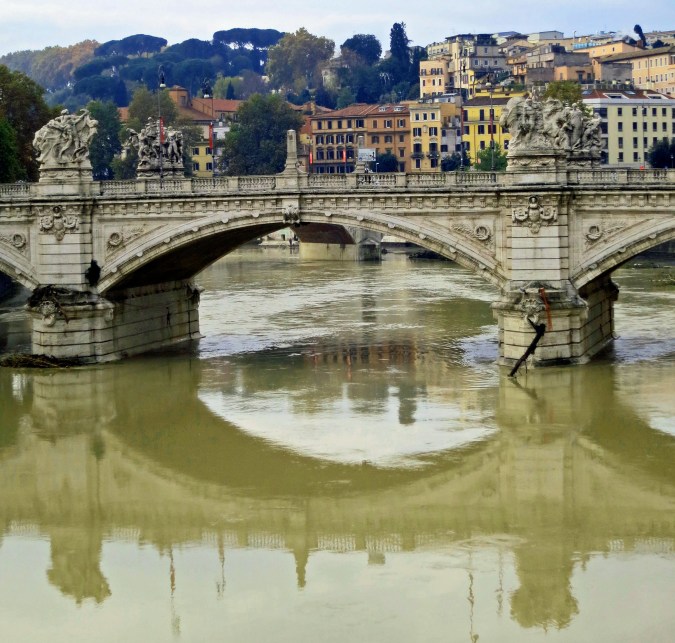
We literally stumbled across the “changing of the guard”……few people that day and we could wander at will. Then, there we were, watching the Swiss Guard! Love exploring Rome at that time of the year!
Stumbled upon… some of our most fun experiences start with those words.
This is awesome.. I just can’t comprehend how these beautiful, massive structures were built (with all the fine detailing too) with only the meager tools they had all those years ago. Why was Peter crucified upside down?
According to legend, Peter requested he be crucified upside down because he didn’t feel he was worthy of being crucified right side up like Jesus.